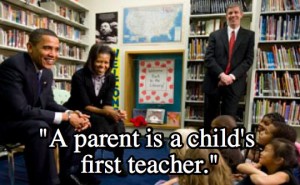The coronavirus pandemic is our newest wake-up call. But instead of listening to the call from our political leaders, how about listening to others?
This is a wake-up call for the nation from Laura Bowman, Parents Across America Board Member.
We need to focus on what’s truly important for our children.
What is important is their face-to-face interactions with caring, experienced, human teachers. It’s ensuring they have what they need in their homes and communities, so they can better succeed in the classroom. It’s fully and fairly funding our public schools so they’re ALL well-staffed and well-resourced.
You are seeing why so many of us have been saying the following:
- We need to adequately fund our schools and pay school staff better. Take it from parents who will be homeschooling their kids for the foreseeable future.
- Packaged digital curriculum delivered through a screen is far inferior to face-to-face learning and is only useful in a limited set of circumstances. The amount of screen time children will experience during school shut-downs will be truly alarming and harmful to their eyes and bodies.
- Children need and deserve nutritious meals every day. Too many children live in food insecure homes. We should never deny children a meal.
This coronavirus pandemic is exposing the glaring inequities so many children experience each day. Too many endure scarcities of food, shelter, and proper healthcare. Children bring these issues with them to school where they’re told by policymakers that their standardized test scores and data are what matter, regardless of their current life circumstances.
Our Wake-up Call: Our nation’s public schools are crucial.
Our public schools are often the hearts of our communities. I hope we all better appreciate them going forward.
I want to thank all of the folks who beat the drum of public education support with me each day. Thank you for always, always keeping the best interests of children at heart. You inspire me and give me a lot of hope.
#####
This is a wake-up call for the nation from Sergio Flores, Educator.
Discover Your Civic Power
In the past twenty years, elites and billionaires have ruthlessly taken advantage of major crises at the expense of everyone else. … The past record of crises – Nine-eleven, Hurricane Kathrine, the market bubble of 2008— shows how easy billionaires or elites profit handsomely while millions of unsuspecting, confused, and even shocked working people lost constitutional rights, life savings, and even their houses.
This is a exceptional time when these vulnerable workers could get together to articulate and advance inclusive and progressive ideas. Indeed, this grave moment presents the perfect chance to effectively promote and practice the neglected civic values of solidarity, justice, fairness, and the search of common good that now seem to hold the key to save us all from the worst effects of a pandemic.
Who knows? Perhaps in a much kinder future, this crisis of 2020 will be referred in the future as the moment teachers, and the working people as well, discover their civic power!
 Many look at the Easter season as a time of rising. Others see it as related to spring and that season’s increasing light. We welcome the season.
Many look at the Easter season as a time of rising. Others see it as related to spring and that season’s increasing light. We welcome the season.It is a great time to wake up and embrace a new day and perhaps a new way of life. It’s a time for discovery and rediscovery as we pull together as a nation and a world. And with renewed hope, here is my Easter wish for this latest call to action. May history help guide us.





















